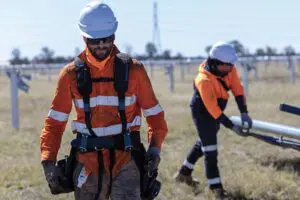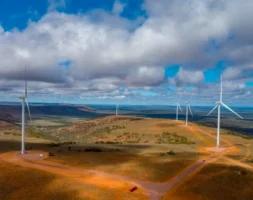Australia Post is aiming to source 100% renewable electricity by 2025 as part of a newly released “road map” to decarbonise and align itself with the Paris climate goal of net zero emissions by 2050.
The government-run mail carrier’s push to end reliance on fossil fuels-generated electricity in little over two years is light on details. But a spokesperson told RenewEconomy on Wednesday that it would include on-site rooftop solar generation and the purchase of Renewable Electricity Certificates (RECs).
“We are also currently exploring options to purchase renewable electricity via an electricity retailer or investing in a power purchase agreement, ” the spokesperson said.
Under a PPA, electricity buyers agree to buy power which may include certificates from a renewable energy project – likely solar or wind farms – at a fixed price over a longer-term.
As RenewEconomy has reported before, how big corporations like Australia Post go about meeting their renewable energy targets can vary greatly.
The purchase of large-scale generation certificates (LGCs) only, while a legitimate method of greening up corporate energy supply, is not considered to be the “gold standard” of renewable energy procurement, in that it doesn’t directly contribute to the creation of new renewable energy projects, or directly source green power.
Generating your own power directly from panels on company buildings, by contrast, is a clear winner.
It’s unclear how much rooftop solar capacity Australia Post has installed to date, but according to the Sustainability Roadmap documents, its first PV array was installed in Melbourne in 2009.
By 2017, when Australia Post announced the installation of a 2.1MW solar system on its Sydney parcel sorting facility in Chullora, the carrier said it a total of 48 solar-equipped sites, which altogether generated a combined total of 5,000MWh (5GWh) of renewable electricity a year.
Australia Post is targeting a 15 percent drop in the overall emissions it generates by 2025 (vs 2019) by continuing to invest in low-carbon vehicles and technologies as part of an emissions reduction plan for Scopes 1, 2 and 3.
It says it has already increased its number of electric delivery vehicles to 4,635, which it claims is the largest electric fleet of its kind in the country.
“Over the past few years, we have seen unprecedented growth in our parcels business because of the pandemic,” said group chief executive officer and managing director Paul Graham.
“Although, as our revenue has climbed, our carbon intensity has dropped. In fact, the carbon emissions per parcel associated with sending the average domestic parcel via Parcel Post halved between fiscal year 2018 and fiscal year 2021.”
With this momentum, Australia Post is aiming for net zero emissions by 2050 – a commitment that will require further investment in renewables and in electrification of its delivery fleet.
To this end, the roadmap identifies a need for collaboration and innovation across the supply chain, including investment in sustainable aviation fuel.
Net zero pledges are rapidly gaining momentum in Australia as more organisations commit to meeting ambitious emission reduction targets to address climate change.
RenewEconomy reported in August that Optus had committed to switch to 100 per cent renewable electricity by the end of 2025, bringing the Singapore-owned Australian telco into line with its main industry rivals, Telstra and TPG.
Around the same time, mining and construction group Orica committed to 100% renewable-generated electricity across all its operations by 2040, with an interim step of 60% by 2030.
Nestlé Australia announced in November it had switched to 100% renewable-generated electricity four years ahead of its global target of 2025.
“Australia is serious about reducing emissions and it is fantastic to see Australia Post, one of the oldest and most established institutions in the country, supporting our net zero ambitions,” federal communications minister Michelle Rowland said in a statement.”









